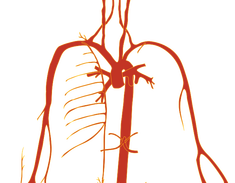Featured Quizzes
User Quizzes
Create Quiz
Data and Charts
Badges and Games
About JetPunk
JetPunk Shop
Dark Mode

Science Multiple Choice #3
Can you answer these multiple choice questions from the world of science?
Rate:
Featured Quiz
Last updated: August 30, 2021
You have not attempted this quiz yet.
More quiz info >>
| First submitted | August 30, 2021 |
| Times taken | 27,314 |
| Average score | 66.7% |
| Rating | 4.26 |
4:00
The quiz is paused. You have remaining.
Scoring
You scored / = %
This beats or equals
% of test takers
also scored 100%
The average score is
Your high score is
Your fastest time is
Keep scrolling down for answers and more stats ...
1.
Which type of blood vessel carries blood from the heart out to the rest of the body?
Arteries
✓
Veins
✓
2.
Would you weigh less on the equator than the North Pole?
Yes
✓
No
✓
This is due to centrifugal force from the spinning of the Earth. The difference is about 1%
3.
Where is the asteroid belt?
Between Earth and the Moon
✓
Between Mars and Jupiter
✓
Beyond Neptune
✓
Scattered evenly throughout the Solar System
✓
4.
What sex chromosomes do most human males have?
XX
✓
XY
✓
YY
✓
About 1 in 1000 boys are born with XYY chromosomes
5.
What was the Cambrian Explosion?
An increase in diverse species beginning about 541 million years ago
✓
An event where a Belgian quantum scientist accidentally created a black hole
✓
The growth in scientific knowledge starting around 1400 AD
✓
6.
What phylum are humans in?
Animalia
✓
Carnivora
✓
Chordata
✓
Primates
✓
7.
Take a sheet of metal with holes in it. Heat the metal. What happens to the holes?
They get larger
✓
They get smaller
✓
They stay the same size
✓
8.
Which continent has the greatest number of marsupial species?
Africa
✓
Asia
✓
Australia
✓
9.
Which of these particles has the lowest mass?
Electron
✓
Neutron
✓
Proton
✓
10.
How many molecules are in a mole?
usually 3
✓
273
✓
About 6.02 x 1023
✓
11.
What does Hertz measure?
Amplitude of an electromagnetic wave
✓
Number of cycles per second
✓
Strength of a magnetic field
✓
12.
What type of galaxy is the Milky Way?
Elliptical
✓
Irregular
✓
Spiral
✓
13.
What is E. coli?
an Algae
✓
a Bacterium
✓
a Fungus
✓
a Virus
✓
14.
In 1971, astronaut David Scott dropped a hammer and a feather on the surface of the moon. What happened?
The hammer fell faster
✓
The feather fell faster
✓
Both objects fell at roughly the same speed
✓
Here's a video of this experiment
15.
If a radioactive substance has a half-life of 1 year, how much of it will be left in 3 years?
1/2
✓
1/4
✓
1/8
✓
None
✓
New and Popular
Save Your Progress
Science Multiple Choice
Quiz series by Quizmaster
Copyright H Brothers Inc, 2008–2024
Contact Us | Go To Top | View Mobile Site

I'm sure there are contrived situations where somehow this doesn't happen, but that goes against the spirit of these quizzes imo.
Not being a scientist, I’m thinking in terms of my perforated steel pizza-cooking tray. As I cook pizza a maximum temperature of 250 ℃, I wouldn’t expect any change perceptible to the naked eye in the size of the holes. However, should the same tray be heated to a temperature approaching its melting point, I suspect a more marked increase in the size of the holes may occur.
Our galaxy is not just a spiral galaxy, in fact it is an barred spiral galaxy!
But since barred spiral galaxies are considered to be a sub-type of spiral galaxies, I'll let that pass for now...
"Take a sheet of metal with holes in it. Heat the metal from 0*C to 500*C. What happens to the holes?"
I also wonder why you'd put the option "amplitude" if you're not going to put the correct option "frequency" in that question - it's right, but a bit weird.
What is 2?
A. an odd number
B. a number that when you halve it leaves a whole number with no decimal places